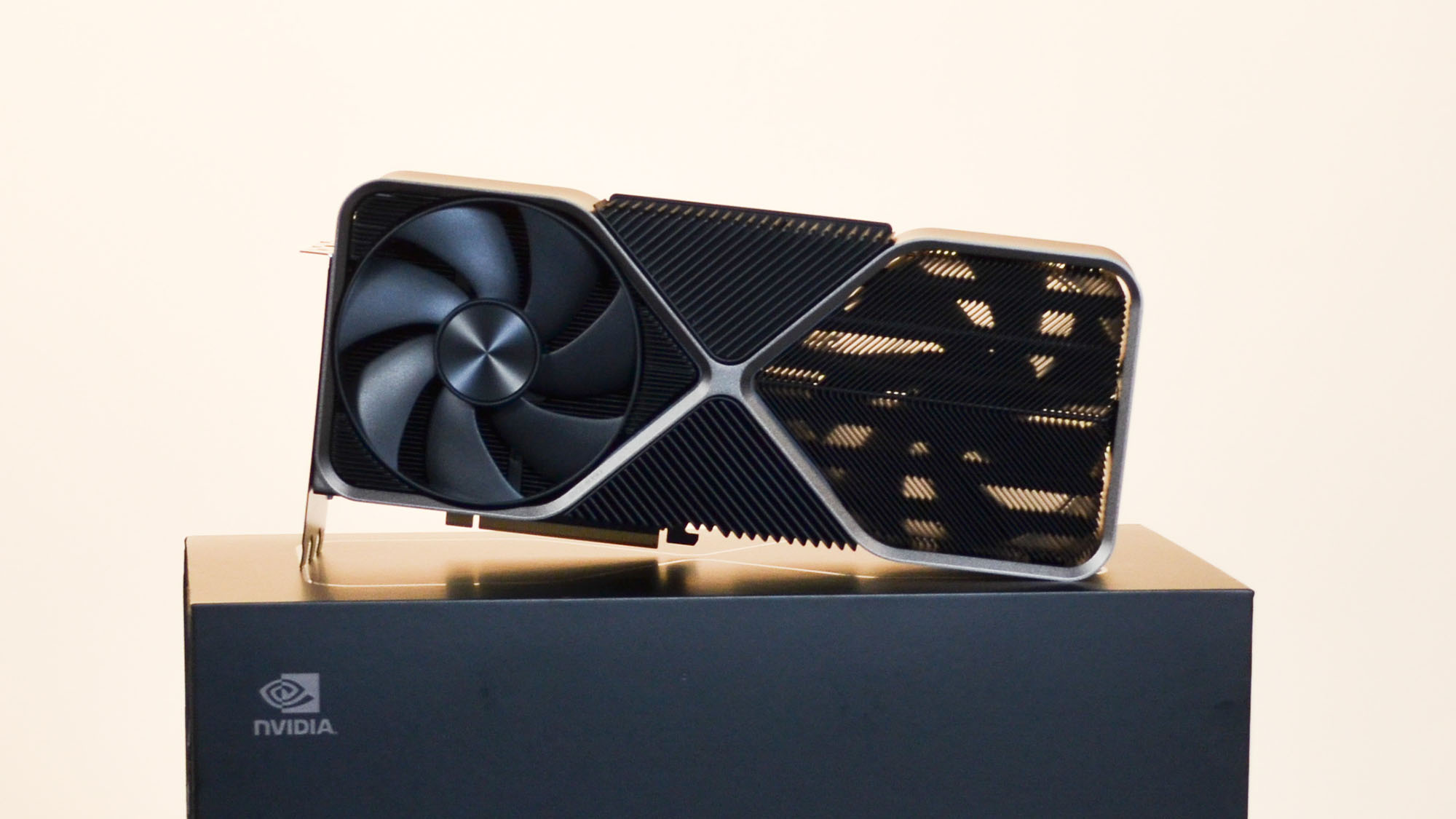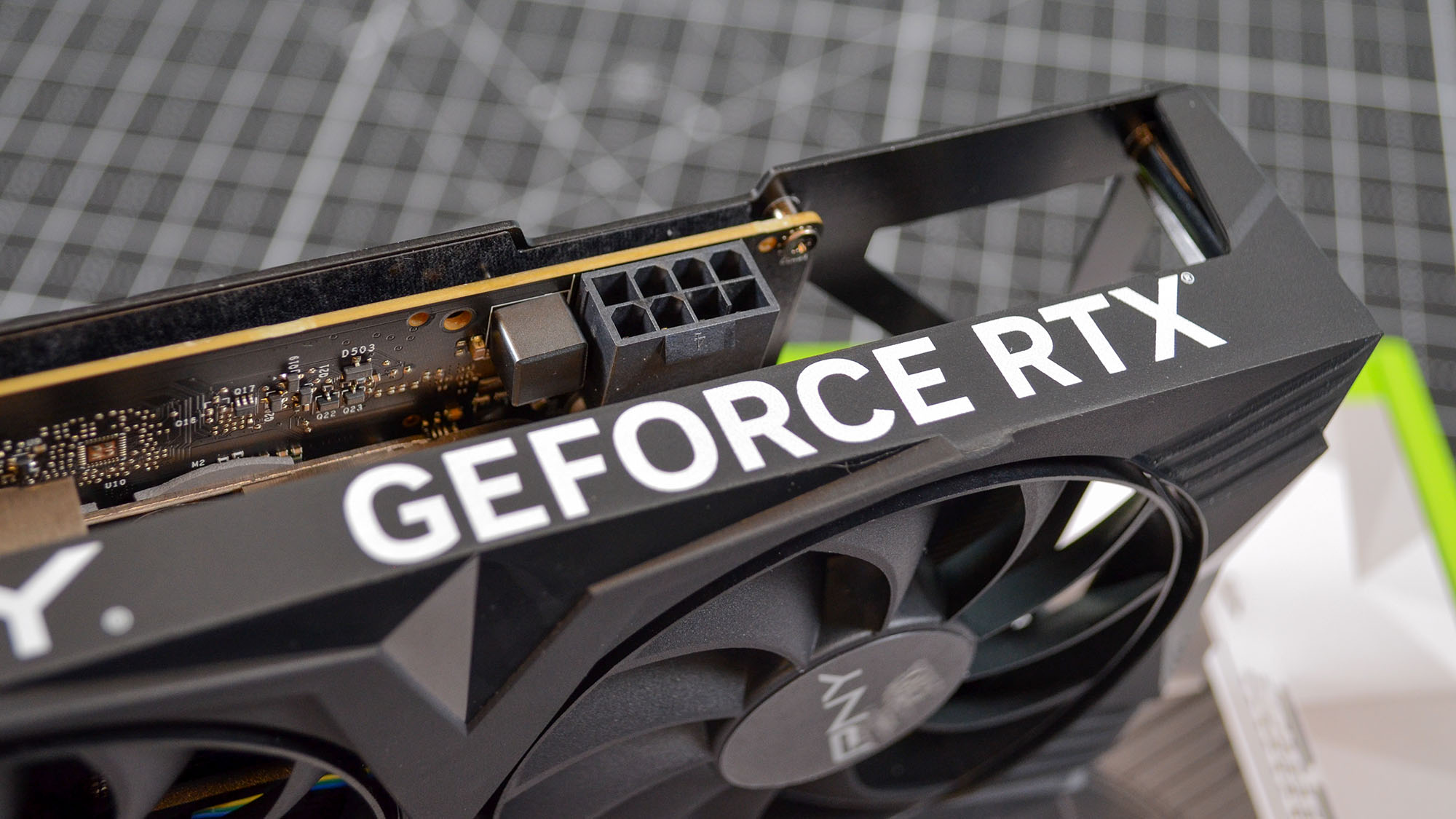
Nvidia’s next-gen Blackwell graphics cards might use a good chunk more power than current Lovelace GPUs, if a leak is to be believed.
This isn’t a straightforward leak, mind – one delivered by an anonymous source via a hardware leaker – but it appears to be a mistake made by power supply manufacturer Seasonic.
Seasonic, a trusted name in the PSU market, has a wattage calculator on its website that allows you to enter all the components in your PC in order to give a result for total power usage. (So you know the approximate wattage demands of your machine, and Seasonic can then recommend power supplies it sells that can cope with that).
What’s interesting is that Seasonic listed Nvidia’s Blackwell GPUs as options in this wattage calculator – though they’ve now been removed – and after a calculation is run, and then saved, Seasonic provides it as a text file download.
Here’s where it gets more interesting still – in that text file, there were TDPs provided for those RTX 5000 graphics cards, from the RTX 5090 all the way down to the RTX 5050. So, this appears to be an accidental (rather thoughtless) leak of these power usage figures via the calculator (as noticed by VideoCardz, and Olrak29 on X).
If the information is correct – and it may not be – the flagship RTX 5090 is specified at 500W, which is 50W more than the RTX 4090.
The rest of the range witnesses smaller increases to the tune of 30W for the RTX 5080 (with an apparent TDP of 350W), then the RTX 5070 notches up by 20W compared to its predecessor (with a TDP of 220W). There’s the chunkiest uptick of all for the RTX 5060 with a 55W increase (to 170W). The RTX 5050, of which there isn’t a desktop equivalent for Lovelace, is said to be 100W.
All of these graphics cards are apparently set to use the 16-pin power connector.

Analysis: A whole lot of rumors are pouring forth
What does all this mean for Nvidia’s next-gen GPUs? Well, it’s time for a reality check for starters, as Seasonic could have stuck placeholder details in for these RTX 5000 graphics cards – or it could have used info Nvidia provided a while back that isn’t correct any longer. Just be keenly aware that the supplied wattages may be off the mark.
Assuming these spilled power specs are right on the money, it’s no real surprise that the RTX 5090 could use 50W more power than its predecessor. After all, we’ve heard speculation about the next-gen flagship being a 50%, or even up to 70%, increase in performance compared to the RTX 4090 – with clock speeds possibly pushed a lot faster (and we mean a lot) – so obviously all that would be reflected in increased power demands, surely? There’s only so much Nvidia can do with generational efficiency gains, after all – isn’t there?
Indeed, if some of those above rumors are true, keeping it down to just a 50W increase for the Blackwell flagship would actually be pretty good going. What’s a bit odd here, though, is another thread recently aired via the rumor mill that the RTX 5090 will be much slimmer – miraculously trim, in fact, and this is very much at odds will all the above. Some sources have got the wrong end of the stick, somewhere – unless Nvidia really has worked some miracles behind the scenes – and it remains to be seen where the mistakes lie.
If you recall, the RTX 5090 and 5080 are the Blackwell GPUs rumored to be arriving this year, with the RTX 5070 and lower not due until 2025 – and maybe not early next year, either, if some other chatter proves to be true. Given that they’re still some way off, we’d take the power usage figures for the RTX 5070 and 5060 graphics cards with even more seasoning – the truth is that Nvidia itself may not have figured out how much juice to supply those GPUs with just yet. If the RTX 5060 does ramp things up as suggested, though, that’s pretty eye-opening – and it could be a big upgrade on the 4060 in that case.
A final point about the 16-pin power connector: this being used throughout the entire RTX 5000 range is a rumor we’ve heard before. Why would Nvidia do this? Essentially, because this is set to become the new industry standard going forward (the safer incarnation of it, that is, namely the 12V-2x6 connector – as opposed to the initial 12VHPWR). So it makes sense for Team Green to adopt 16-pin connectors throughout in terms of standardizing board designs and saving on supply chain costs (as we discuss in more detail here).
The kicker for consumers, though, is that with older power supplies, they’ll need an adapter for the new 16-pin connector to work, which will add to the price of buying one of the best new GPUs – not ideal when it comes to a more affordable model like the RTX 5060, or indeed the budget RTX 5050 if it’s real.
Additional power consumption will, of course, also add a little to running costs over time (electricity usage), and higher TDPs for the likes of the RTX 5060 may also push folks into a PSU upgrade, potentially (yet more cost and hassle). Let’s not get carried away with this speculation yet, though, because as noted, particularly lower down the Blackwell line-up, we’re far from convinced about these numbers.







